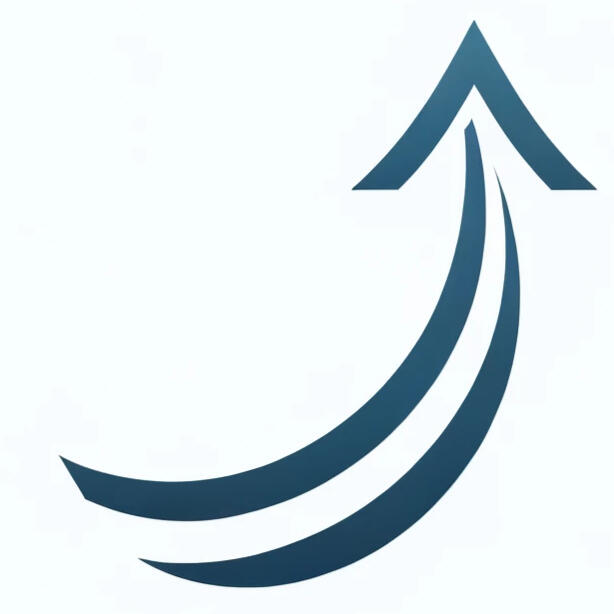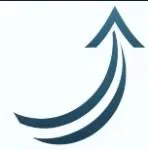

Our Blog
Find out Anything and Everything there is to know about your online presecne

Enhance Your Sales Funnel for Maximum Conversion Efficiency
Master Sales Funnel Optimization Strategies for Maximum Conversions in Small Business
Small and local business owners often seize only 3 percent of their website visitors on a first interaction, leaving massive revenue on the table. By mastering how to optimize sales funnel for conversions, you can guide prospects through Awareness, Interest, Decision, Action, and Retention with precision and measurable impact. This guide explains foundational concepts, proven tactics, performance measurement, case studies, software tools, common challenges, and emerging trends. You’ll learn to map each stage of your funnel, deploy expert CRO techniques, analyze results, and leverage real-world examples from RevenueGeneratingSolutions.com’s tailored digital marketing solutions—all to transform casual browsers into loyal customers.
What Is a Sales Funnel and Why Is It Crucial for Small Business Conversions?
A sales funnel is a structured, multi-stage process that guides prospects from first brand exposure to repeat purchase and loyalty. By defining each stage—Awareness, Interest, Decision, Action, Retention—you create targeted touchpoints that reduce friction and boost conversion rates. For small businesses, an optimized funnel turns limited marketing spend into predictable lead generation, turning foot traffic and online visits into revenue.
What Are the Five Key Stages of a Sales Funnel?
The five key stages of a sales funnel are Awareness, where prospects first learn about your brand; Interest, where they engage with educational content; Decision, where they compare offers; Action, where they convert; and Retention, where you nurture repeat business.
Awareness: Brand visibility via ads, SEO, local outreach
Interest: Content assets like blog posts, videos, webinars
Decision: Case studies, free trials, pricing guides
Action: Checkout pages, booking forms, consultations
Retention: Newsletters, loyalty programs, follow-up offers
These stages reveal exactly where prospects drop off and where to apply targeted optimizations.
How Does a Sales Funnel Differ from a Marketing Funnel?
A sales funnel focuses specifically on converting prospects into customers, while a marketing funnel includes broader brand-building activities. The marketing funnel casts a wider net with top-of-funnel tactics—social media, PR, content marketing—whereas the sales funnel hones in on lead qualification, nurturing, and closing techniques. Aligning both funnels ensures seamless progression from awareness campaigns into revenue-driving sales processes.
Why Should Small Business Owners Focus on Sales Funnel Optimization?
Sales funnel optimization empowers small business owners to stretch limited budgets by improving conversion efficiency at each stage. Rather than increasing ad spend, you refine landing pages, calls-to-action, and nurturing workflows to maximize revenue per visitor. This targeted approach yields measurable ROI—often doubling conversion rates without additional traffic—so your next marketing dollar works harder for your bottom line.
Which Sales Funnel Optimization Strategies Drive Higher Conversion Rates?
Optimizing your funnel requires a blend of design, messaging, and testing techniques. From landing page refinements to personalized workflows and data-driven experiments, each strategy contributes to a cohesive conversion engine. Implementing these tactics sequentially amplifies results and uncovers incremental gains.
How to Optimize Landing Pages for Small Business Conversions?
Landing page optimization begins with a crystal-clear value proposition and ends with frictionless conversion. High-impact elements include compelling headlines, concise benefits, trust signals like local reviews, and minimized form fields.
Page ElementOptimization TechniqueImpactHeadline & SubheadlineEmphasize specific local benefitsImproves initial engagement by 70 %Trust SignalsAdd testimonials and community badgesIncreases credibility and reduces skepticismForm DesignLimit to essential fieldsReduces form abandonment by 50 %VisualsLocal imagery and social proof visualsBoosts emotional connection
Fine-tuning these components with split tests and mobile responsiveness can triple conversion rates for community-focused offers.
What Are Effective Lead Nurturing Techniques for Local Entrepreneurs?
Effective lead nurturing for local entrepreneurs hinges on timely, relevant follow-ups that build trust and keep prospects engaged.
Segmented email workflows triggered by user behavior.
Hyper-local content—events, testimonials, case studies.
SMS reminders for appointments or promotions.
Consistent, personalized communication transforms curious leads into qualified prospects and primes them for the final decision stage.
How to Design High-Converting Calls-to-Action (CTAs)?
High-converting CTAs use action verbs, clear benefits, and urgency cues.
Verb-led phrasing (e.g., “Book Your Free Audit”)
Benefit statement (“Boost Foot Traffic by 30 %”)
Visual contrast and whitespace
Embedding CTAs at key touchpoints—end of blog posts, sidebar widgets, exit-intent popups—guides prospects toward commitment without overwhelming them.
Why Is A/B Testing Essential for Conversion Rate Improvement?
A/B testing isolates the impact of headlines, layouts, colors, or offers to identify the highest-performing variants. By running controlled experiments, you gather empirical data on visitor preferences and behaviors. Over time, continuous testing refines each funnel element, unlocking steady conversion uplifts and ensuring your sales processes evolve with audience expectations.
How Does Personalization Enhance Sales Funnel Performance?
Personalization tailors messaging and offers based on visitor attributes—location, browsing history, referral source—creating relevant experiences that resonate. Dynamic content blocks, personalized email subject lines, and retargeted ads can lift engagement by 25 % and conversions by 20 %. By aligning offers with prospect intent, personalization accelerates progression through Decision and Action stages.
How Can Small Businesses Measure and Analyze Sales Funnel Performance?
Measuring and analyzing funnel performance requires selecting the right metrics, deploying analytics tools, and translating data into actionable insights. By tracking funnel health, you pinpoint drop-off points, optimize resource allocation, and justify marketing investments with clear ROI.
What Are the Key Sales Funnel Metrics and KPIs to Track?
Key metrics include:
Conversion Rate (prospects to customers)
Customer Acquisition Cost (CAC)
Customer Lifetime Value (CLV)
Lead Volume and Quality
Drop-off Rate at each stage
Monitoring these KPIs reveals which funnel stages require immediate attention and which optimization tactics yield the greatest return on investment.
Sales Funnel Intelligence for Demand Forecasting
The sales funnel is a valuable source of real-time market intelligence and prospective demand. Assuming the sales funnel of a firm follows the market conditions of the industry, forecasting visibility can be enhanced by using macroeconomic leading indicators of the sales funnel. How to embed such a forecasting model to the extant forecasting process in the f
Which Tools Help Analyze Sales Funnel Data Effectively?
Top analytics platforms for small businesses include Google Analytics for website behavior, HubSpot for CRM-integrated funnel tracking, and Mixpanel for event-based analytics. Each tool offers dashboards, segmentation, and visualization features to map user journeys and measure stage-by-stage performance.
How to Interpret Funnel Data for Actionable Insights?
Interpreting funnel data involves correlating KPIs with marketing activities and funnel changes. Identify stages with high drop-off rates, test hypothesis-driven improvements, and measure subsequent performance shifts. Regularly reviewing data and adjusting tactics ensures your funnel remains optimized for evolving market conditions.
What Are Proven Case Studies Demonstrating Successful Sales Funnel Optimization?
Real-world case studies validate strategies and inspire confidence. RevenueGeneratingSolutions.com has guided local service providers to double conversion rates, showcasing how targeted funnel enhancements deliver quantifiable revenue gains.
How Did a Local Business Double Conversions Using Funnel Optimization?
A neighborhood café improved online orders by 110 % by redesigning its landing page, adding clear breakfast bundle CTAs, and segmenting visitors by loyalty tier. This focused approach to Awareness and Decision stages eliminated friction and maximized average order value.
What ROI Improvements Have Clients Achieved with Our Sales Funnel Strategies?
Clients working with our tailored digital marketing service have reported average ROI improvements of 3× within six months. By combining landing page tweaks, lead nurturing automations, and split tests, small businesses often see CAC drop by 30 % while CLV rises through retention campaigns.
How Do Testimonials and Reviews Boost Funnel Conversions?
Integrating social proof at critical funnel points—product pages, checkout forms, email signatures—reinforces credibility and reduces purchase anxiety. Displaying local customer testimonials can increase conversions by 34 %, as prospective buyers trust peer endorsements above all.
Which Sales Funnel Software and Tools Best Support Small Business Optimization?
Choosing the right software stack accelerates funnel deployment, testing, and automation without overextending resources. The ideal solution balances ease of use, integration capabilities, and scalability.
What Are the Top Sales Funnel Software Options for Small Businesses?
PlatformCore FeatureIdeal Use CaseClickFunnelsDrag-and-drop funnel builderRapid campaign setup and testingSysteme.ioAll-in-one marketing suiteBudget-friendly automationHubSpotCRM and analyticsDeep customer data integration
Selecting software that aligns with budget and growth goals streamlines funnel creation and management.
How to Integrate CRM Systems with Your Sales Funnel?
CRM integration synchronizes lead and customer data across touchpoints—ads, landing pages, email campaigns—enabling unified reporting and personalized outreach. Automating data flows reduces manual work, speeds up follow-ups, and ensures no lead falls through the cracks.
How Does Marketing Automation Enhance Lead Nurturing and Conversion?
Marketing automation platforms enable triggered email sequences, behavior-based messaging, and multi-channel workflows. Automations deliver relevant content at the right time, increasing engagement by 40 % and speeding up lead qualification—ultimately shortening sales cycles and boosting close rates.
How Can Small Businesses Overcome Common Sales Funnel Challenges?
Limited budgets, local competition, and mobile user expectations present key hurdles. Addressing these challenges head-on ensures your funnel performs consistently across channels and devices.
What Are the Biggest Obstacles for Small Business Sales Funnels?
Small businesses often struggle with:
Limited marketing budgets that demand high ROI
Local market saturation and competition
Time constraints for testing and content creation
Prioritizing high-impact tests and leveraging template-driven tools helps overcome resource constraints and maintain competitive advantage.
How to Optimize Sales Funnels for Mobile Users?
Mobile optimization—responsive design, fast-loading pages, thumb-friendly forms—can boost mobile conversions by 160 %. Ensuring CTAs and forms are accessible on smaller screens reduces friction and captures on-the-go prospects effectively.
Why Is Retargeting Critical for Increasing Conversion Rates?
Only 3 percent of visitors convert on first visit, making retargeting essential. Retargeted ads across social and search channels can increase conversion rates by 147 % by reminding prospects of abandoned carts, special offers, or relevant content—guiding them back into your funnel.
What Are the Latest Trends and Best Practices in Sales Funnel Optimization for 2025?
Staying ahead of emerging trends ensures your funnel remains competitive and leverages cutting-edge technologies to engage modern audiences.
How Is AI and Automation Revolutionizing Sales Funnel Optimization?
AI-driven personalization and predictive lead scoring automate prospect qualification and deliver tailored content at scale. Machine learning algorithms analyze behavior patterns to recommend next-best actions, reducing CAC and increasing close rates through smarter targeting.
What Role Does Content Marketing Play in Moving Prospects Through the Funnel?
Content marketing fuels the funnel by educating prospects at each stage—blog posts for Awareness, case studies for Decision, onboarding guides for Retention. High-quality, search-optimized articles drive organic traffic and nurture leads through educational and transactional touchpoints.
How to Use Interactive Tools Like Calculators to Boost Engagement?
Interactive calculators—ROI estimators, conversion rate checkers—invite prospects to input data and receive personalized results instantly. These tools increase dwell time, capture qualified leads, and establish your expertise, turning anonymous visitors into marketing-qualified prospects.
RevenueGeneratingSolutions.com’s tailored sales funnel optimization service combines proven methodologies, advanced analytics, and local business expertise to generate measurable growth. By applying these strategies, small business owners can maximize conversions, reduce acquisition costs, and build lasting customer relationships. Take action today by auditing your funnel’s stages and implementing targeted optimizations—your next revenue milestone awaits.
Copyrights by RGS ™ 2025| Privacy Policy | Terms & Conditions